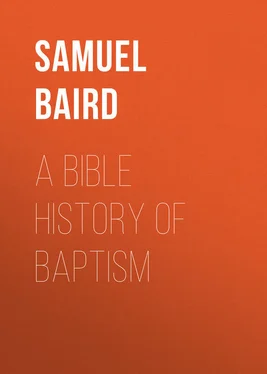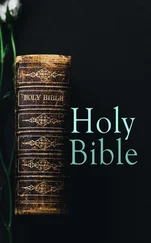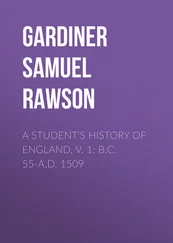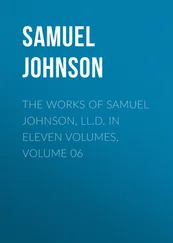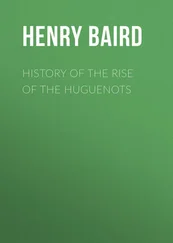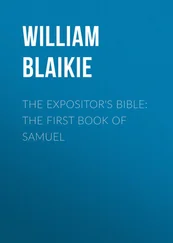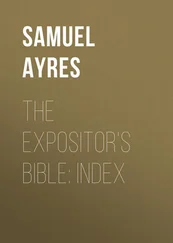Samuel Baird - A Bible History of Baptism
Здесь есть возможность читать онлайн «Samuel Baird - A Bible History of Baptism» — ознакомительный отрывок электронной книги совершенно бесплатно, а после прочтения отрывка купить полную версию. В некоторых случаях можно слушать аудио, скачать через торрент в формате fb2 и присутствует краткое содержание. Жанр: foreign_antique, foreign_prose, на английском языке. Описание произведения, (предисловие) а так же отзывы посетителей доступны на портале библиотеки ЛибКат.
- Название:A Bible History of Baptism
- Автор:
- Жанр:
- Год:неизвестен
- ISBN:нет данных
- Рейтинг книги:5 / 5. Голосов: 1
-
Избранное:Добавить в избранное
- Отзывы:
-
Ваша оценка:
- 100
- 1
- 2
- 3
- 4
- 5
A Bible History of Baptism: краткое содержание, описание и аннотация
Предлагаем к чтению аннотацию, описание, краткое содержание или предисловие (зависит от того, что написал сам автор книги «A Bible History of Baptism»). Если вы не нашли необходимую информацию о книге — напишите в комментариях, мы постараемся отыскать её.
A Bible History of Baptism — читать онлайн ознакомительный отрывок
Ниже представлен текст книги, разбитый по страницам. Система сохранения места последней прочитанной страницы, позволяет с удобством читать онлайн бесплатно книгу «A Bible History of Baptism», без необходимости каждый раз заново искать на чём Вы остановились. Поставьте закладку, и сможете в любой момент перейти на страницу, на которой закончили чтение.
Интервал:
Закладка:
1. The source of the waters. In the Revelation, it is described as proceeding out of the throne of God and the Lamb. In Ezekiel the same idea is presented under the figure of the temple, God’s dwelling-place. The waters issue out from under the threshold of the house “at the south side of the altar” – the altar where the sprinkled blood and burning sacrifices testified to the Person by whom, and the price at which, the Spirit is sent. (Compare John vii, 39; xvi, 7; Acts ii, 33.)
2. The exhaustless and increasing flow of the waters is shown to the prophet, who, at a thousand cubits from their source, is led through them, – a stream ankle deep. A thousand cubits farther, he passed through, and they had risen to his knees. Again, a thousand cubits, and the waters were to his loins; and at a thousand cubits more it was a river that he could not pass over. “And he said unto me, Son of man, hast thou seen this?”
3. The river was a fountain of life. On its banks were “very many trees,” “all trees for meat,” with fadeless leaf and exhaustless fruit, “the fruit thereof for meat, and the leaf thereof for medicine.” “And there shall be a very great multitude of fish” in the Dead Sea, “because these waters shall come thither.” For “it shall come to pass that every thing that liveth which moveth, whithersoever the river shall come shall live. Every thing shall live, whither the river cometh.”
4. By these living waters, the Dead Sea of depraved humanity shall be healed. “Now this sea of Sodom,” says Thompson, “is so intolerably bitter, that, although the Jordan, the Arnon, and many other streams have been pouring into it their vast contributions of sweet water for thousands of years, it continues as nauseous and deadly as ever. Nothing lives in it; neither fish nor reptiles nor even animalculæ can abide its desperate malignity. But these waters from the sanctuary heal it. The whole world affords no other type of human apostasy so appropriate, so significant. Think of it! There it lies in its sulphurous sepulcher, thirteen hundred feet below the ocean, steaming up like a huge caldron of smouldering bitumen and brimstone! Neither rain from heaven nor mountain torrents nor Jordan’s flood, nor all combined can change its character of utter death. Fit symbol of that great dead sea of depravity and corruption which nothing human can heal!” 4 4 “The Land and the Book.” Vol. II, pp. 531, 534.
But the pure waters of the river of life will yet pour into this sea of death a tide of grace by which “the waters shall be healed.” – Ezek. xxvii, 8.
In the prophecy of Joel (iii, 18,) there is another allusion to these waters. Again, in Zechariah a modified form of the same vision appears. “It shall be in that day that living waters shall go out from Jerusalem; half of them toward the former” (the Eastern or Dead) “sea, and half of them toward the hinder sea” (the Mediterranean). “In summer and winter shall it be;” not a mere winter torrent, as are most of the streams of Palestine, but an unfailing river. (Zech. xiv, 8.)
Such is the type of the Spirit, as his graces flowed in Eden, and shall be given to the world, in the times of restitution. But, for the present times, the symbols of rain and fountains of springing water are used in the Scriptures as the appropriate types of the now limited and unequal measure and distribution of the Spirit. The manner and effects of his agency are set forth under three forms, each having its own significance:
1. Inasmuch as the rains of heaven are the great source of life and refreshment to the earth and vegetation, the coming of the Spirit and his efficiency as a life-giving and sanctifying power sent down from heaven are expressed by water, shed down, poured, or sprinkled, as the rain descends. Says God to Israel: “I will pour water upon him that is thirsty, and floods upon the dry ground; I will pour my Spirit upon thy seed and my blessing upon thine offspring.” – Isa. xliv, 3. The Psalmist says of the graces of the Spirit to be bestowed by Messiah, “He shall come down like rain upon the mown grass” (the stubble, after mowing) “as showers that water the earth.” – Psalm lxxii, 6. Of this we shall see more hereafter.
2. The act of faith by which the believer seeks and receives more and more of the indwelling Spirit is symbolized by thirsting and drinking of living water. “Ho, every one that thirsteth, come ye to the waters.” – Isa. lv, 1. “If any man thirst, let him come unto me and drink… This he spake of the Spirit which they that believe on him should receive.” – John vii, 37-39. “Let him that is athirst come. And whosoever will, let him take the water of life freely.” – Rev. xxii, 17. The intimate relation which this figure sustains, responsive to the one preceding, is illustrated by the expression wherein God describes the land of promise: “A land of hills and valleys, and drinketh water of the rain of heaven. A land which the Lord thy God careth for.” – Deut. xi, 11, 12. With this, compare the language of Paul: “The earth which drinketh in the rain that cometh oft upon it, and bringeth forth herbs meet for them by whom it is dressed, receiveth blessing of God; but that which beareth thorns and briars is rejected and is nigh unto cursing; whose end is to be burned. But, beloved, we are persuaded better things of you.” – Heb. vi, 7-9. The figure is further illustrated in the sublime description given by Ezekiel of the destruction of Assyria, in which he speaks of “the trees of Eden, the choice and best of Lebanon, all that drink water ,” and so grow and flourish. (Ezek. xxxi, 16.)
3. The duty of the penitent to yield himself with diligent obedience to the sanctifying power and grace of the Holy Spirit, to put away sin and follow after holiness, is enjoined under the figure of washing himself with water. “Wash ye; make you clean; put away the evil of your doings from before mine eyes; cease to do evil; learn to to well.” – Isa. i, 16, 17. “O Jerusalem, wash thine heart from wickedness, that thou mayest be saved.” – Jer. iv, 14. So, James cries, “Cleanse your hands, ye sinners; and purify your hearts, ye double-minded.” – Jas. iv, 8. In the rite of self-washing, to which these last passages refer, the pure water still symbolized the Holy Spirit given by Jesus Christ; whilst the washing expressed the privilege and duty of God’s people conforming their lives to the law of holiness, and exercising the graces which the Spirit gives.
Part II.
THE VISIBLE CHURCH
Section VII. — The Abrahamic Covenant
The interest attaching to the Sinai baptism is greatly enhanced by its immediate and intimate relation to us. The covenant then sealed is the fundamental and perpetual charter of the visible church. The transaction by which it was established was the inauguration of that church. It was the espousal of the bride of Christ, whose betrothal took place in the covenant with Abraham. So it is expressly and repeatedly stated by the Spirit of God in the prophets. (See Jer. ii, 1, 2; Ezek. xvi, 3-14; xxiii; Hos. ii, 2, 15, 16.) It is true that this is controverted. It is asserted that the relations established by the covenants between God and Israel were secular and political, not spiritual; that the blessings therein secured were temporal; that they conveyed nothing but a guarantee that Israel should become a numerous and powerful nation, that God would be their political king, the Head of their commonwealth, and that the land of Palestine should be their possession and home. How utterly at variance with the teachings of God’s Word are these assertions a brief analysis of the record will prove.
The covenant of Sinai was the culmination of a series of transactions which began with the calling of Abram from Ur of the Chaldees. “The Lord had said unto Abram, Get thee out of thy country, and from thy kindred and from thy father’s house, unto a land that I will show thee; and I will make of thee a great nation, and I will bless thee and make thy name great; and thou shalt be a blessing; and I will bless them that bless thee, and curse him that curseth thee; and in thee shall all families of the earth be blessed.” – Gen. xii, 1-3. Respecting this record, the following points are made clear in the New Testament: (1) That under the type of Canaan, “the land that I will show thee,” heaven was the ultimate inheritance offered to Abram; and that it was so understood by him and the patriarchs. (Gal. iv, 26; Heb. xi, 10, 14-16.) (2) That the blessings promised through him to all the families of the earth were the atonement and salvation of Jesus Christ; and that this also was so understood by Abram. (Gen. xvii, 7; Gal. iii, 16, John viii, 56.) Thus, in his call from Chaldea, and the promises annexed to it, God “preached before the gospel unto Abraham.” – Gal. iii, 8. So far, certainly, the transaction is eminently spiritual.
Читать дальшеИнтервал:
Закладка:
Похожие книги на «A Bible History of Baptism»
Представляем Вашему вниманию похожие книги на «A Bible History of Baptism» списком для выбора. Мы отобрали схожую по названию и смыслу литературу в надежде предоставить читателям больше вариантов отыскать новые, интересные, ещё непрочитанные произведения.
Обсуждение, отзывы о книге «A Bible History of Baptism» и просто собственные мнения читателей. Оставьте ваши комментарии, напишите, что Вы думаете о произведении, его смысле или главных героях. Укажите что конкретно понравилось, а что нет, и почему Вы так считаете.
